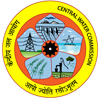NHP
- Physical based mathematical sedimentation modelling (TOR & EOI)
One of the most important issues in the planning of storage reservoirs is the loss in the storage capacity due to silting. The sediment entering into a storage reservoir gets deposited progressively with the passage of time and thereby reduces the dead as well as live storage capacity of the reservoir. Further, it also affects the braiding characteristics & course of alluvial rivers impacting the ecology and biology of the nearby settlements. Hence, it is necessary to assess the rate of sedimentation at the planning stage and accordingly a portion of the capacity of the reservoir can be reserved for silt deposition. The assessment of sediment generation from various parts of the catchment also helps in identifying/ prioritising the vulnerable areas to soil erosion and take appropriate mitigation measures like catchment area treatment, construction of sediment retention structures etc. The phenomenon of generation of sediment from the catchment and river banks is complex in itself. Current understanding of the factors affecting soil erosion and sedimentation include soil characteristics, meteorological characteristics such as intensity and duration of precipitation, wind velocity, exposure conditions and topography of the soil cover and land use conditions and land management practices. The morphological characteristics such as soil texture, channel geometry, longitudinal slope, flood intensity, flood retention structures play an important role in transport of the sediment generated from the catchments. Integration of sediment generation, transportation and deposition would give a picture of sediment flow in rivers and would be useful in sediment management. This study proposes to establish a methodology for modelling of sediment generation from catchments, its transportation mechanism through channels/rivers and its retention/deposition by flood water retention structures like reservoirs. The following basins are proposed for the study
Package - I
- Ramganga Basin
- Barak Basin
Package - II
- Narmada Basin
- Cauvery Basin
- Three West Flowing rivers in western Ghats
- Kuttiadipuzha Basin
- Peechi Basin
- Mangalam Basin
- Development of Aquatic Habitat Atlas for the Indian River System (TOR)
A tradeoff between National Economic Development and Environmental Protection is inevitably associated with all Water Resources Project invariant of their scale. Maintenance of ecosystem is indirectly linked with the health & other benefits of the people residing in the basin and the same has been gaining importance in not only developed but also in developing countries. A commonly accepted definition of Environmental Flows (E-flows) refers to water within a river, wetland or coastal zone that serves to maintain ecosystems and provides benefits to its residing population.To ensure the ecological needs of rivers it is utmost essential to correctly assess the environmental needs and develop rigid and robust policies for its implementation. A number of case studies pertaining to assessment of e-flows in Indian Rivers have been made in the past by Central/ State Govt. and academic institutions but there is no unanimity in terms of methodology as well as its generalization.
Generally accepted methods for assessment of environmental flows i.e. the Hydraulic cum Habitat simulation method and holistic approach (Building Block Methodology, etc.) are quite simple and reliable particularly during lean period. All methods of e-flow assessment rely on the understanding and data availability on relationships between ecology & river flows and ecological characteristics of river. However, no single source of information is available for the spatial distribution of aquatic flora & fauna as well as the quantitative & qualitative requirement for its integral growth.
India has about 20 river systems that support lives of more than 900 fish species, planktons and benthic invertebrate, and other macro-flora indicating the integrity of river ecosystem. In addition, this provides major ecosystem services including cultural and religion trust representing the Indian ethos. However, the information on biodiversity particularly the fish species, plankton and benthic invertebrate in these river systems are scanty. Further, in the light of climate change and other anthropogenic developments (pollution, water abstraction, water obstruction and overfishing/illegal fishing, etc.) on the river systems, these aquatic lives have come under stress. Therefore, there is a strong need for documentation of these aqua lives, their biology and habitat for protection and conservation for future.
In the above background, the Aquatic Habitat Atlas on all major rivers are proposed to be developed so as to overcome the limitations of scanty data and ease the retrieval of ecological data with its main utility for the assessment of Environmental flows throughout the country. Through this study it is aimed to develop aquatic life habitat atlas for all river systems in Indian sub-continent.
- Generalized Model for Hydrological Studies (Updating of HDA)
 Government of India
Government of India 